Boat and Design Definitions
- Designer – The naval architect, group, or individual responsible for the design and specifications for your boat.
- Builder/Manufacturer – The company, boat yard, or individual responsible for the construction of your boat.
- Boat Class/Model – The model designation or other unique identifier of your boat’s design and/or generation.
- Year Designed – The year in which your boat’s design/model was created.
- Year Built – The year in which your boat was constructed.
- Hull Number – The sequence number of your boat based on the order in which it was constructed during the model’s production run. This number is embedded in your HIN, but may require deciphering. Consult your boat’s manufacturer or locate the guides available on the internet.
- Hull Identification Number (HIN) – The Hull Identification Number or HIN is a serial number assigned by the manufacturer that uniquely identifies a boat, similar to the VIN on an automobile. Boats built after November 1, 1972 will have an HIN that is a 12 character, alpha-numeric string. The HIN can be found in your boat insurance documentation.
- One Design – You are certifying that the design of your boat is governed by an active one design class rule and your boat complies with the current version of said rule.
- Factory/Custom/Semi-Custom
- Factory – Boat is a standard design and build where the variations between sisterships do not change the dimensions collected for this certificate.
- Custom (CTM) – Boat is a one-off or very limited design and build with no or minimal similarities to sisterships (if any).
- Semi-Custom (Semi-CTM) – Boat is part of a family of builds based on a common design but with substantial differences between sisterships.
- Modified – Changes have been made to this boat after leaving the factory which significantly alter measurable dimensions and/or data points from the original design and/or construction.
Hull Definitions
- LOA – The length overall of the hull. Note bowsprit and/or boomkin separately.
- LWL – Load waterline length. The measurement point of the hull at it’s waterline.
- Beam – The maximum beam of the vessel.
- Draft – This is the measurement from the waterline to the bottom of the keel including any bulb. If the boat has any type of movable appendage, the measurement shall be in the appendage’s lowest, fixed position.
- Displacement (DISPL) – The displacement of the yacht in pounds or kilograms in lightship configuration: without crew, water, fuel, or stores aboard.
- Ballast (BAL) – The ballast of the yacht in pounds or kilograms. Note any additions or deletions from the standard and the locations.
- Material – Construction material of the hull, keel, rudder, and mast (e.g.: fiberglass, lead, iron, aluminum, carbon fiber, etc.)
Keel Types
Rig and Sail Definitions
- I / IG – The measurement along the front of mast from the Genoa halyard to the main deck. The main deck is where the deck would be if there were no deckhouse or measured from deck sheer-line abeam the mast to the highest point of sail attachment.
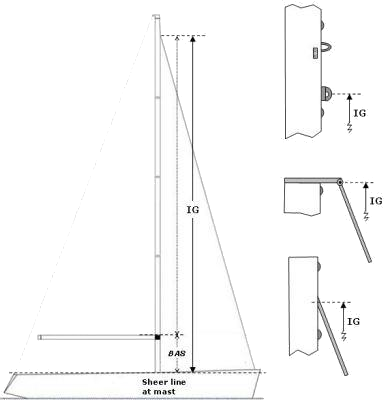
- J – The base of the foretriangle measured along the deck from the headstay intersection of the forestay with the deck to the front of the mast.
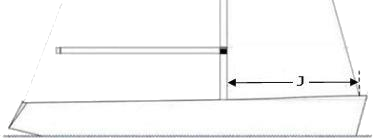
- P – The luff length of the mainsail, measured along the aft face of the mast from the top of the boom to the highest point that the mainsail can be hoisted or black or white band.
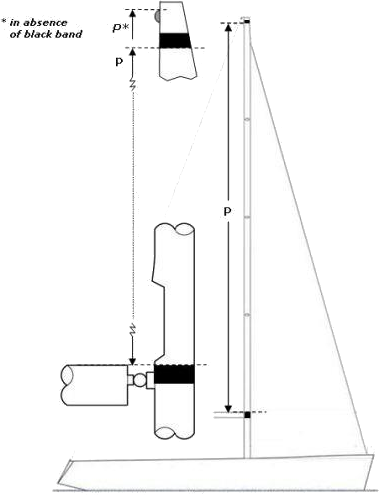
- E – The foot length of the mainsail, measured along the boom from the aft face of the mast to the outermost point on the boom to which the main can be pulled or to the black or white band.
- PY & EY – Respectively, the luff length and foot length of the mizzen of a yawl or ketch measured in the same way as for the mainsail.
- ISP – The measurement from the highest spinnaker halyard to the deck.

- SPL / JC – The length of the spinnaker pole when forced outboard in its fitting on the mast and set in a horizontal position athwartships, measured from the centerline of the yacht to the extreme outboard end of the pole and any fittings used when a spinnaker is set.
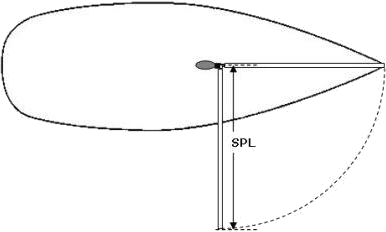
- TPS – The distance from the forward face of the mast the point of attachment of the tacking point of any flying spinnaker or headsail on a fully extended bowsprit or prod.
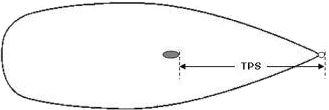
- Whisker Pole – A spar attached to the mast spar and connected to a headsail clew.
- WPL – The length of the whisker pole when forced outboard in its fitting on the mast and set in a horizontal position athwartships, measured from the centerline of the yacht to the extreme outboard end of the pole and any fittings used when any to be attached headsail is set.
- LP – The shortest distance between the clew and the luff of the largest jib or genoa.
- AREA (Spinnaker, asymmetric) – Area of asymmetric spinnaker as calculated by the IACC formula. This can be found on the documentation that came with your new sail or by contacting your sailmaker.
- Mainsail Girth measurement points:
- MHB – top width.
- MUW – seven-eights width.
- MTW – three-quarter width.
- MHW – half width.
- MQW – quarter width.
- SLU – Spinnaker luff length. Note: For symmetric spinnakers this will be approximately the I dimension.
- SLE – Spinnaker leech length.
- SHW – Spinnaker half width. The half width of any spinnaker shall be 75% or more of the foot length.
- SMG – Asymmetrical spinnakers mid-girth, found by measuring between the mid-points of the luff and leech.